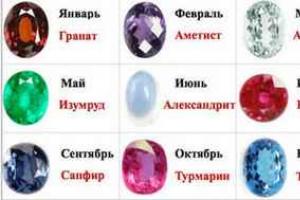Almost every builder or repairman who uses carriers every day is familiar with the phenomenon of knots appearing on the cable. In general, it’s almost mystical with them - one end is plugged into a socket, and a hammer drill is connected to the other. Despite the distance between these two ends from each other, knots almost always appear on the carrier in an interesting way - it is impossible to fight this phenomenon. They are absent only if an extension cord is used on a reel - we will talk about it in this article, in which, together with the site, we will deal with the issues of choice and self-made such a wonderful and convenient thing as an extension cord on a reel.
Extension cords on a metal reel photo
Extension cord on a reel: how to choose and distinctive features
By and large, there is nothing to choose from on the reel - this product has no varieties at all, and they can differ from each other in only three indicators.

Alternatively, you can also add the manufacturer to this list, but this will not be entirely correct. However, it is not only possible, but also necessary to pay attention to who manufactured the extension cord on the reel - the quality of the product primarily depends on this point.
Electrical extension cord on a reel: advantages and disadvantages
I probably didn’t start with the right thing - first I needed to understand the advantages and disadvantages, and then move on to making a choice. Well, okay, as they say, better late than never, and everything is learned by comparison - naturally, we will compare with a carrier without a reel. What will we evaluate? Features and ease of use.

In general, an extension cord on a reel is convenient only in one case - when it plays the role of a stationary connection point for other carriers. Well, even when they are used to connect not entirely mobile equipment - for example, or. This is if we talk about construction - if you choose such a carrier for the home and for the dacha, then it will be convenient in any case.
Extension cord on a reel with grounding: how to make it yourself
The main problem in manufacturing similar products with your own hands, oddly enough, it is not the drum, but the frame on which it is installed. Let’s just say that you can’t bend it from wire, and not every person knows how to cook it. It is for this reason that the issue of making a carrier on a reel yourself needs to be solved from the ground up - solve it, everything else will not seem too difficult to you. I can give you a couple of ideas as tips.

The next carrying element on the reel is the reel. An elementary option for its manufacture is to use polypropylene pipe and plywood. If we imagine this process step by step, it will look like this.
- Take a piece of pipe (diameter 32 or 40mm) required length and solder couplings on both sides.
- Next, again, we solder pieces of pipe into these couplings on both sides.
- Now we put pre-cut plywood disks on the pieces of pipes and fasten them with plugs standard for this polypropylene pipe.
The end result should be something resembling dumbbells. The only thing you need to pay attention to in the process of making such a drum is the evenness of the soldering. Curvature is primarily a beating during rotation, and beating is an inconvenience of use.

Extension cord on a reel with grounding photo
- Connect the drum to the base. A threaded rod is ideal as an axis of rotation; pass it through the polypropylene tube in advance. drilled hole it won't be difficult. The only thing that can really be difficult is to ensure a long-term movable connection between the stud and the frame - without bearings this will not work. In principle, the reel will work without them, at least for some time - but if you want to use it for a long time, then bearings are needed, and you will have to rack your brains over their fastening and installation.
- Put several on the reel (you can just use a block from an old extension cord), connect the required amount of cable to them, then add a handle to the drum and reel in the carrier.
Basically, that's it. We can say that the carrier with the bobbin is ready. Naturally, we should not forget about making the right choice sockets and cables - in fact, it was because of them that all this trouble started. At a minimum, you will need a round wire with a cross-section of 2.5 squares and sockets with a plug designed for an operating current of at least 16A. I think you can figure out how to connect all this into one circuit on your own.
To conclude the topic about the extension cord on the reel, I will add only one thing - in my opinion, the game is not worth the candle. Making such a carrier is more mess than it will be of use - if you decide that you really need it, then it is easier to buy it. In addition, it is not a fact that the carrier of this type you make will last a long time and will be truly practical and comfortable. In general, there are quite a lot of chances that you will be disappointed in it.
When you get tired of winding a cable around your elbow every day and then unraveling it, you have to urgently make a device like this.
My version of a homemade garden and yard extension cord from what was on hand at the time.
And this is what happened:
A piece of chipboard, PVC scrap pipes D-40 mm, piece of laminate, PVC panel, threaded rod or large screw, small cylindrical handle from an old bedside table and the most important part is an empty spool of welding wire.
Tools:
Electric drill, drills, drill bit, saw, clamp, screwdriver, knife, wrench, el. cable ~30 m, plug, socket.
Manufacturing:
We saw off the laminated chipboard measuring 300*300 mm, drill a hole in the center for screwing in a pin (screw), depending on what you found.

Let's take it PVC pipe and cut off a piece from it equal to the width of the coil + 10 mm, reserve for the washer, this will be the sleeve on which the coil with the wire rotates.

Now let's select core drills, we need three different sizes, one No. 1 is equal to or slightly less than the inner diameter of the pipe, the second No. 2 is equal to the outer diameter and the third No. 3 is 10 mm or more larger than the second.

Using the first drill, we make several centering washers for the pipe from a piece of laminated chipboard or laminate, put them on the stud and then put on the pipe sleeve.


Using drill No. 3, we drill a PVC panel (laminate), drill the resulting circle with drill No. 2, we get a ring, it should fit onto the pipe, then we put on the coil.

It is convenient to drill on a wooden lining with a clamp, then the likelihood of PVC breakage is reduced.



Using drill number 3, we make the last finishing washer, put it on the stud and tighten the nut with a lock nut or glue, there is no need to tighten it, the coil should rotate easily but not dangle.

Install the handle for winding the wire.

For the wire, we make a hole in the coil, slightly larger than the diameter of our wire. We insert a wire from the inside and attach a plug, on the other side one or more sockets.
Reading time ≈ 4 minutes
A do-it-yourself universal extension cord reel is a fairly necessary attribute in any garage or household. By using a rotating drum, you can increase the functionality and ease of use of your portable cable. A coil made from a minimum set of materials will protect the wire from damage, which has a positive effect on durability and reliability of operation.
Key stages in the manufacture and assembly of an extension cord coil
1. Making a bushing for the drum. A universal homemade extension cord reel will rotate. Therefore, it is important to make a reliable bushing with locking washers. To do this, you need to take a pipe with a cross section of 20 and 25 mm. The material is cut to the width of the drum, taking into account the installation of the fixing bolt. In this case, a tubular element with a cross-section of 20 mm must be cut with a margin of at least 5 mm in width. The smaller pipe diameter should fit freely inside. On the sides of the axle, bushings machined from steel 2-4 mm thick are installed. The moving element is fixed with an M8 or M10 bolt.

2. Stand for the reel made of profiled pipe. In the instructions in the photo, which shows how to make a reel for an extension cord, there is a structurally important element - a U-shaped stand. This part can be made from sections of profiled pipe 20x20 mm and 20x40 mm. Initially, it is important to determine the dimensions of the structure taking into account the dimensions of the rotating drum. A 20x20 mm pipe is cut to the required parameters and welded together in the shape of the letter P. The central part is marked in the center. After which a 20x40 mm pipe is welded vertically.

Important: The 20x40 mm pipe must be welded as evenly as possible so that in the future there will be no difficulties with rotating the drum. To do this, it is recommended to use a square or a building level.
3. Attaching the drum axle to the stand. The axle must be welded to a 20x40 mm pipe. It is first necessary to note the height position of the drum. Round pipe 20 mm is welded to the profiled electrode welding. You will also need a thrust washer, which will act as a retainer for the drum. If necessary, the washer can be welded to the profile.

4. Handles for the reel and supporting frame. Handles are necessary for ease of use of the reel. Handles from a grinder or drill are suitable as the main elements. The large handle must be secured to the upper part of the 20x40 mm profile using a nut. The small one should be located on the coil itself. The handle for rotating the drum can be made from a bolt or pin. A handle with a roller will also work. In this case, you can get a smoother operation of the rotating mechanism.

5. Installing sockets on the coil. Before reading how to make a reel for an extension cord with your own hands, you need to purchase all the components to assemble the product. For normal operation of the device, you must purchase panel sockets. This type of socket is quite convenient and most suitable for installation. Installation options are shown in the photo below. For reliability, the socket can be secured with self-tapping screws with a cap. The socket fasteners are selected individually, taking into account the width of the plastic drum.

6. Installing the drum on the axle. After installing the sockets and handle, the coil must be secured to the axis. To do this, a drum with a sleeve is placed on a 20 mm pipe. The outer part of the axle is fixed with a bolt or nut, depending on the type of design chosen. The locking mechanism should be tightened taking into account the free rotation of the drum. After tightening, the coil should not jam.

7. Winding the electrical cable onto a reel. For the intended use of the product, you will need to wind the cable. Almost any wire with a core cross-section of 1.5-2.5 mm2 will do. Winding must be carried out taking into account the cable fixing mechanism. There must be a plug at the end of the wire to turn it on, and installed sockets must be connected in series. The number of sockets depends on overall dimensions drum

Important: For safety reasons, all contacts should be insulated.
For production we will need:
- steel square 10 mm - 1 m long.
- stud with nut with a diameter of 10-12 mm - length 170 mm.
- a handle, for example from an angle grinder.
- coupling 100 mm and two plugs for it
- two circles of plywood with a diameter of 230 mm
- 8 mm stud - 1 m long and 6 nuts and washers
- three sockets and one plug
- the wire
Making an extension cord on a reel.
I made the base for the coil from a square, bending it according to the dimensions that I indicated in the photo. Then I welded a mount with two nuts, a handle borrowed from a broken angle grinder will be attached to the top one, and you will find out what the second nut is for below. To attach the coil, I welded a pin to the base.
To prevent the wire from rubbing against the pin during winding, you need to make a bushing for it, for example from a polypropylene pipe.
Now let's start making the coil itself.
In the circles that I made from plywood with a diameter of 230 mm, I made holes in advance. In the center there is a hole for attaching the coil itself to the base, three holes in a circle for the wire to exit to the sockets and three more holes for tightening the coil. And another hole on the outer circle, near the circle, where the handle will be attached. I made the same holes in the plugs.
We prepare the sockets, cut off three parts of about 10 cm each from the wire, strip them and attach them to the sockets. Then we insert the wires from the sockets into the holes and tighten the sockets, the circle and the plug together. We twist the wires. We drill a hole in the edge of the coupling for the cable and insert it into the hole. We connect the cable with the wires coming from the sockets. We put a second plug on the coupling, take a second circle of plywood and tighten it all with three pins. The coil is ready.
We place the coil on our base and lightly tighten it with a nut so that the coil rotates freely. To prevent the nut from unscrewing, it must be locked.
We wind the wire onto a reel. To prevent the reel from unwinding spontaneously during transportation, as I wrote above where the handle is attached, I welded another nut nearby, and we screw the limiter into it.
Not everyone has the opportunity to purchase a device for cable winding, or they are not satisfied with the parameters of the product, since a long extension cord will not fit on a purchased reel. Therefore, it is necessary to make the device from scrap materials. You can make a reel for an extension cord with your own hands in a few hours.
Materials
Sold in a plumbing store required material to assemble the device. The price of pipes is low, therefore affordable to everyone. Inventory list:
- plastic bay;
- plywood;
- polypropylene pipe;
- the wire;
- socket;
- fork;
- fitting.
Surely, any dacha owner has a basic tool.

Tools
Every dacha owner should have the tools for making an extension cord reel with his own hands. If you don’t have electric tools, you can rent them from a construction company. Scroll:
- sharp knife;
- screwdriver;
- pliers;
- dowels;
- self-tapping screws;
- ruler;
- pencil;
- soldering iron for plastic;
- screwdriver;
- drill;
- sandpaper;
Instead of a soldering iron for polypropylene, you can use bolts and nuts to secure pipes.
Assembling a plastic device
All parts are pre-cut and prepared, laying them out at the workplace. It's easier to achieve results this way. How to make a coil for an extension cord with your own hands step by step:
- A circle of suitable diameter is drawn on plywood or MDF sheet. If the material is thin, then you need to make 4 parts in order to later glue them in pairs with quick-drying glue. Cut out the blanks with a jigsaw or a hacksaw.
- The resulting elements are symmetrically glued to each other with double-sided tape. According to the diameter of the sleeve on which the cable will be wound, a circle is drawn on cut pieces of plywood. Mark cross-shaped lines with the same spacing and place dots at the location where the bushing is installed. Also, one point is located in the center of the wooden disk. Wood is processed sandpaper along the edges, since it is difficult to make an even cut with a hacksaw.
- Cut 4 metal or aluminum tubes with a diameter of 10 mm along the length of the sleeve, for example - 25 cm. You will need 8 8-point dowels. Plastic rods are driven into the tubes with a hammer, in which they must be firmly installed.
- At the designated points, holes are made with a drill with a diameter slightly smaller than the black self-tapping screw. A hole with a cross-section of 22 mm is made in the central mark on the wooden disk.
- A tube is applied to each hole in the circle in the inner part and screwed with self-tapping screws. There should be 4 pins, a sleeve made of plastic pipe. If the diameter of the axis is 15 cm, then the pins must be positioned in accordance with this size. WITH reverse side another disk made of wood is installed and screwed on with screws.
Attention! The plastic bushing made from the pipe must fit tightly onto the metal rods so that it does not rotate while twisting the wire.

Making a tube holder
At the second stage, a stand for the reel is made from polypropylene. You must have a device for soldering pipes, without which you cannot make a reel for an extension cord with your own hands from polypropylene. Progress:
- They make a rectangular bottom frame that is installed on the ground. They collect it from plastic parts, corners and tees. On the elongated part, a tee is soldered in the center so that the free outlet is directed upward. A vertical stand is attached so that it is above the drum, to which a tee is also attached in the middle, only the outlet should be directed horizontally into the frame. A horizontal tube is soldered into this hole - this is the axis for rotating the coil.
- Up vertical stand fix the handle from the tube horizontally. Furniture plugs are placed at the ends. Place the drum on a polypropylene sleeve and fix the clip on the edge.
- A hole is drilled in the disk, the plug is removed from the extension cord and the cable is pushed through a wooden circle so that the socket is outside. It is attached to the drum with self-tapping screws. The plug is reinstalled. A short wooden rod (handle) is screwed to the product with a screw. This part will make it easier to wind the wire.
Attention! It is better to make a coil for an extension cord with your own hands using photos and drawings.

Wooden drum installation
From improvised means they make an effective device for winding wire. Step by step assembly:
- A piece 15 cm long is cut from a log with a diameter of 10-15 cm. 2 wooden disks are made from plywood 1 cm thick. The blanks are treated with sandpaper so as not to drive splinters into your fingers during operation.
- The circles are screwed with self-tapping screws on the sides of the log. Long drill With a cross section of 22 mm, a hole is made through the middle of the wooden disk so that it passes through another circle.
- Take a flat stick 2 cm thick, from which 22 cm is cut off, but if the length of the axis is 15 cm, and the thickness of the disks is 1 cm. Push the part through the log part.
- Long and even sticks from under the handle of a rake or shovel are screwed along the edges of the axis so that their size is larger than the drum. If the diameter of the coil disks is 30 cm, then the axis is screwed in the middle on wooden rods 50 cm long.
- A crossbar made of sticks is attached to the upper part. Black screws are used. A hole is made in the disk, a cable is inserted into it, and the socket is screwed to the circle.
The device is installed with the pins in the ground, with the handle up. Turn the drum by hand until the cable is completely wound. This is the simplest version of the extension cord reel. Do it yourself in 1 hour.

Metal structure
To make a reel for a cable extension cable with your own hands from iron you will need welding machine. Material for assembly can be found at hand in the country. How to do it:
- Circles are cut out of 2 sheets with a cutter. The edges are cleaned with a grinder.
- A hole with a diameter of 1.2 cm is made in the middle of the workpieces.
- Cut an iron tube of the required length with a cross-section of half an inch. Take round reinforcement and use a grinder to cut off a certain part.
- The disk is placed on the table, a tube is placed vertically in the exact center, which is leveled with a square, and the part is secured by welding. On the reverse side they do similar work. Smooth fittings are inserted inside the pipe.
- Construct 2 triangular frames from the corners. In the middle, where the axis will be located, weld a corner horizontally on one and the other workpiece and make holes in the center. The lower part of the triangles is connected with corners, and a handle is mounted at the top.
- The coil is held at the level of the holes for the rod. Reinforcement is inserted into the hole. On one side they are attached by welding, and on the other they make a handle for rotating the drum. An input for the cable is also burned into the disk. The rosette is fixed on the circle.
You will get a durable homemade extension cord reel. Anyone can make, paint and test for functionality with their own hands.

Installing a carrier from scratch
The protective sheath is cut off a few centimeters from one edge of the cable. Carefully remove the strands from the copper wires so that they are exposed. The carrier is disassembled, the wire is placed in a special groove, and the wires are passed through the clamps, having previously unscrewed the small bolts. The fasteners are clamped back with the wires and applied top cover and tighten the box from below with bolts or screws.

It's the same with a fork. Also removed from the cable protective covering by 2-3 cm. The cores are removed from the wires. Disassemble the fork and unscrew the bolts on the fastenings. Wires are passed into these places, and the clamps are screwed back in. The cable is installed in the groove. Place the lid on top and tighten it with a bolt.








